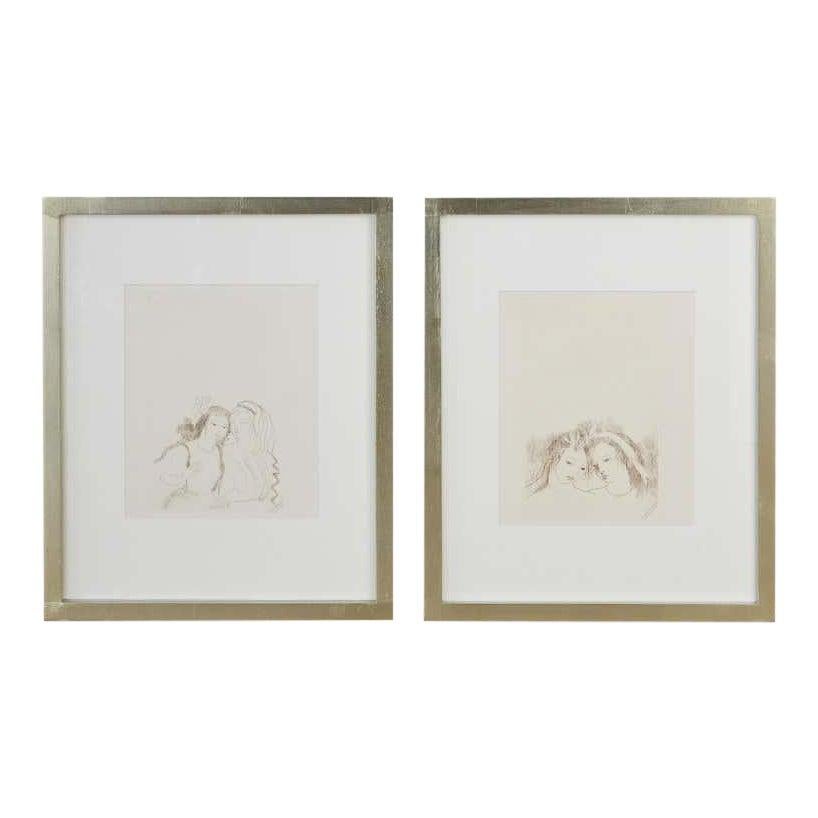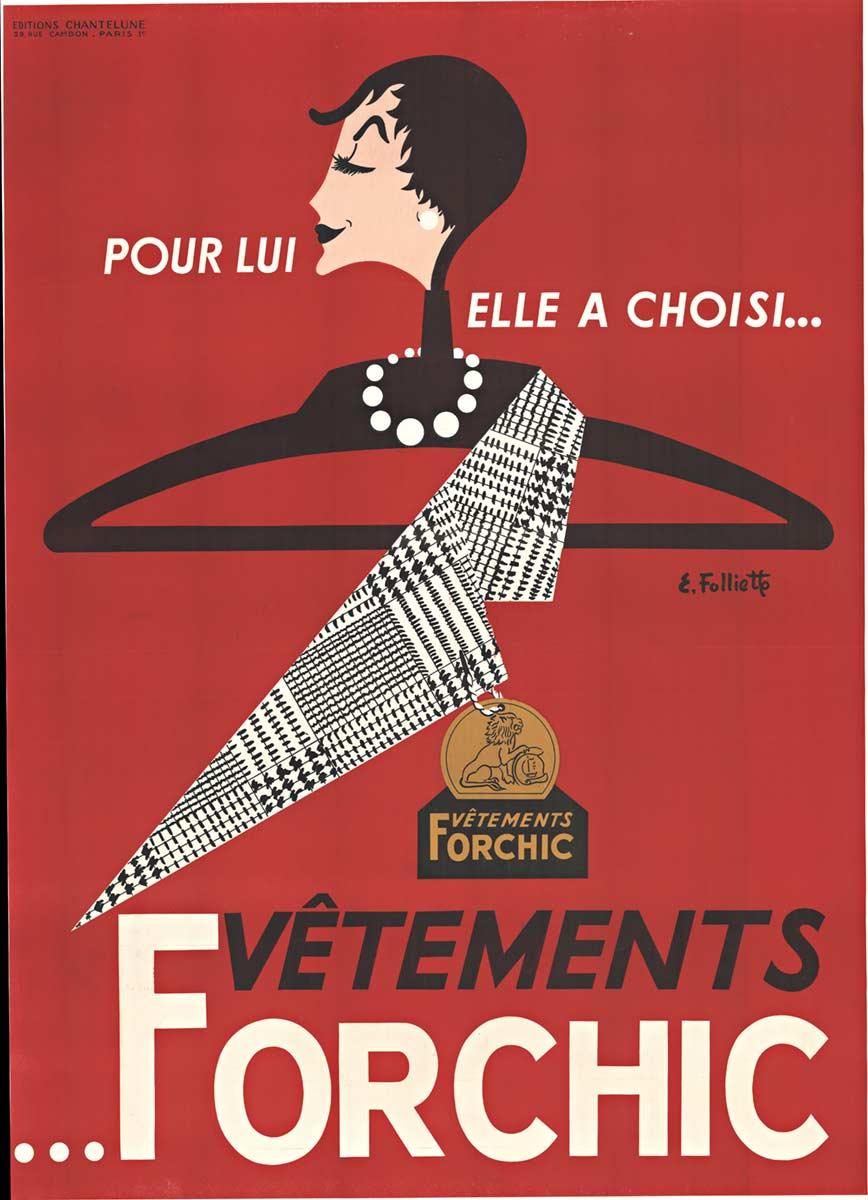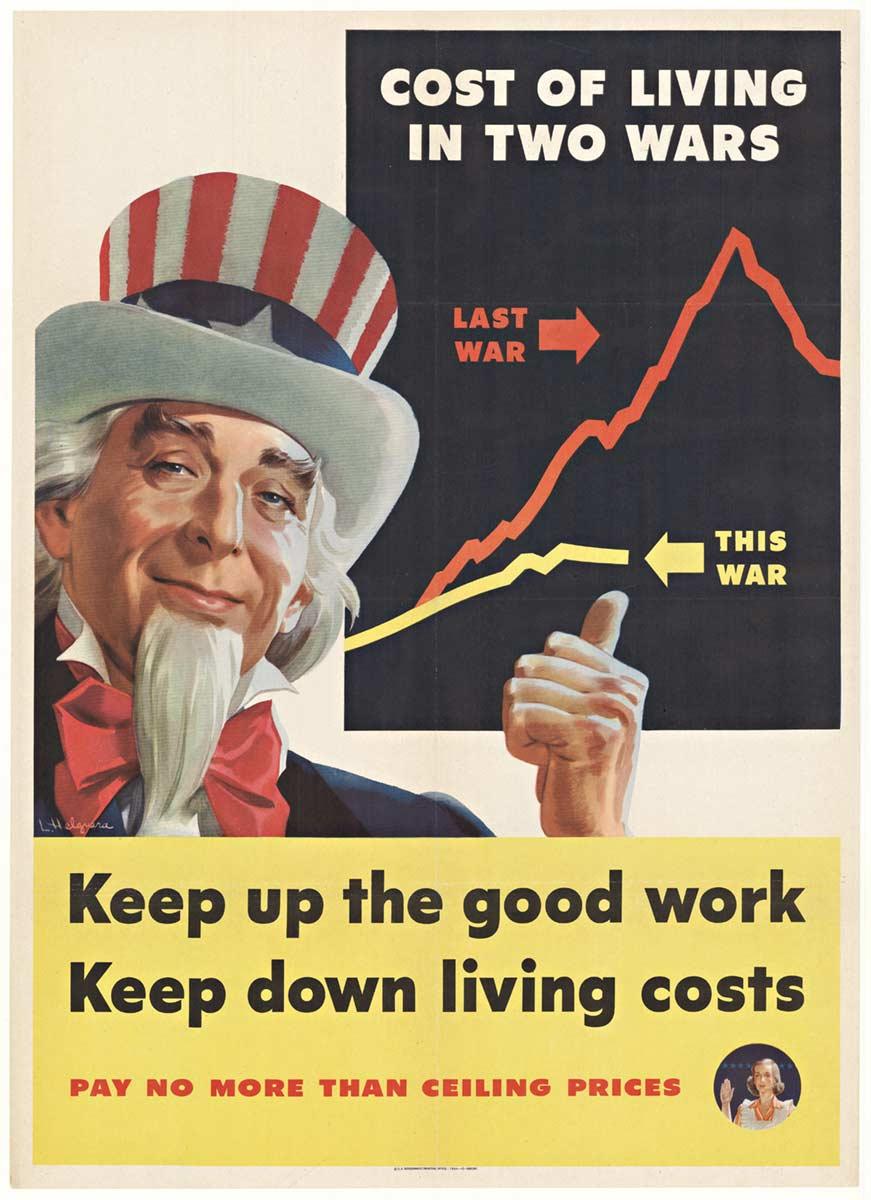Marc ChagallMarc Chagall - Revolution - Original 1960s Poster for Galiera Museum1963
1963
About the Item
- Creator:Marc Chagall (1887 - 1985, French)
- Creation Year:1963
- Dimensions:Height: 31.5 in (80 cm)Width: 23.63 in (60 cm)Depth: 0.04 in (1 mm)
- Movement & Style:
- Period:
- Condition:
- Gallery Location:Collonge Bellerive, Geneve, CH
- Reference Number:1stDibs: LU16121523733
Marc Chagall
Described by art critic Robert Hughes as "the quintessential Jewish artist of the twentieth century," the Russian-French modernist Marc Chagall worked in nearly every artistic medium. Influenced by Symbolism, Fauvism, Cubism and Surrealism, he developed his own distinctive style, combining avant-garde techniques and motifs with elements drawn from Eastern European Jewish folk art.
Born Moishe Segal in 1887, in Belarus (then part of the Russian empire), Chagall is often celebrated for his figurative paintings, but he also produced stained-glass windows for the cathedrals of Reims and Metz, in France; for the United Nations, in New York; and for the Hadassah Hospital in Jerusalem, as well as book illustrations, stage sets, ceramics, tapestries and fine-art prints. Characterized by a bold color palette and whimsical imagery, his works are often narrative, depicting small-village scenes and quotidian moments of peasant life, as in his late painting The Flight into Egypt from 1980.
Before World War I, Chagall traveled between St. Petersburg, Paris and Berlin. When the conflict broke out, he returned to Soviet-occupied Belarus, where he founded the Vitebsk Arts College before leaving again for Paris in 1922. He fled to the United States during World War II but in 1947 returned to France, where he spent the rest of his life. His peripatetic career left its mark on his style, which was distinctly international, incorporating elements from each of the cultures he experienced.
Marc Chagall remains one of the past century’s most respected talents — find his art on 1stDibs.
- ShippingRetrieving quote...Ships From: Collonge Bellerive, Geneve, Switzerland
- Return PolicyA return for this item may be initiated within 7 days of delivery.
- Pablo Picasso - The Painter - Original LithographBy Pablo PicassoLocated in Collonge Bellerive, Geneve, CHPablo Picasso - Original Lithograph Title: Painter and his Model From the illustrated book "Regards sur Paris" (Paris: André Sauret, 1962) Edition of 180 Individual prints were not s...Category
1960s Modern Portrait Prints
MaterialsLithograph
- Jean Dubuffet - original lithograph from XXe Siecle magazineBy Jean DubuffetLocated in Collonge Bellerive, Geneve, CHJean Dubuffet - Original Lithograph from XXe Siecle magazine 1958 Dimensions: 32 x 25 cm Edition: G. di San Lazzaro. Unsigned and unumbered as issuedCategory
1960s Modern Figurative Prints
MaterialsLithograph
- Pablo Picasso - The Ballet Dancer - Original LithographBy Pablo PicassoLocated in Collonge Bellerive, Geneve, CHPablo Picasso - Original Lithograph Title: The Ballet Dancer Dimensions: 32 x 24 cm 1954 Reference: Bloch 767 Frontispiece for the book "Le Ballet" (Paris: Editions Hachet, 1954) by...Category
1950s Modern Portrait Prints
MaterialsLithograph
- Jean Cocteau - Antigone - Original LithographBy Jean CocteauLocated in Collonge Bellerive, Geneve, CHOriginal Lithograph by Jean Cocteau Title: Antigone From "Théâtre" Portfolio, 1957 Edition: 207 / 8800 Dimensions: 22.5 x 15.5 cm Jean Cocteau Writer, artist and film director Jean Cocteau was one of the most influential creative figures in the Parisian avant-garde between the two World Wars. “The poet never asks for admiration; he wants to be believed.” —Jean Cocteau Synopsis Jean Cocteau was born on July 5, 1889, in Maisons-Laffitte, France. He spent most of his life in Paris, where he became part of the artistic avant-garde and was known for his variety of accomplishments. Over a 50-year career, he wrote poetry, novels and plays; created illustrations, paintings and other art objects; and directed influential films, including The Beauty and the Beast and Orpheus. He died on October 11, 1963. Early Life and Literary Debut Jean Cocteau was born on July 5, 1889, in Maisons-Laffitte, France, a village 12 miles outside Paris, to Georges and Eugénie (née) Lecomte Cocteau. He and his two older siblings were brought up in comfortable household in Paris, where they were introduced to the arts by their parents. Their father, a lawyer and amateur artist, committed suicide in 1898. After his father's death, Cocteau was raised by his mother and his maternal grandfather. He attended school at the Lycée de Condorcet in Paris and he showed an early talent for writing. When he was just 18, his poetry was read aloud in performance arranged by the well-known actor Edouard de Max, and he became the toast of literary Paris. His first book of poems, La Lampe d'Aladin (Aladdin's Lamp), was published a year later, in 1909. Cocteau and the Parisian Avant-Garde In the 1910s, Cocteau formed friendships with many prominent members of the Parisian avant-garde, including writer Guillaume Apollinaire and artists Amedeo Modigliani and Pablo Picasso. He was so impressed by seeing the dancer Vaslav Nijinsky perform with the Ballets Russes that he met the company's founder, Sergei Diaghilev, and asked to work with him. Cocteau designed posters for the Ballets Russe, and in 1917 he was one of the collaborators on the ballet Parade: Cocteau wrote the story, Erik Satie composed the music, Léonide Massine choreographed the dance and Picasso designed the set and costumes. Cocteau's activities of the 1920s were remarkably varied. He composed opera libretti for several composers. He published collections of poetry and illustrations as well as a novel inspired by his experiences during World War I. He staged a ballet called Le Boeuf Sur le Toit (The Ox on the Roof) and directed modern adaptations of several classic dramas. He promoted the work of young writer Raymond Radiguet...Category
1950s Modern Portrait Prints
MaterialsLithograph
- Leonor Fini - Surrealist Portraits - Handsigned Original LithographBy Leonor FiniLocated in Collonge Bellerive, Geneve, CHLeonor Fini - Surrealist Portraits Original Lithograph Handsigned Dimensions: 38 x 28 cm Leonor Fini is considered one of the most important women artists of the mid-twentieth century, along with Leonora Carrington, Frida Kahlo, Meret Oppenheim, Remedios Varo, and Dorothea Tanning – most of whom Fini knew well. Her career, which spanned some six decades, included painting, graphic design, book illustration, product design (the renowned torso-shaped perfume bottle for Schiaparelli’s Shocking), and set and costume design for theatre, ballet, opera, and film. In this compellingly readable, exhaustively researched account, author Peter Webb brings Fini’s provocative art and unconventional personal life, as well as the vibrant avant-garde world in which she revolved, vividly in life. Born in Buenos Aires in 1907 (August 30 – January 18, 1996, Paris) to Italian and Argentine parents, Leonor grew up in Trieste, Italy, raised by her strong-willed, independent mother, Malvina. She was a virtually self-taught artist, learing anatomy directly from studying cadavers in the local morgue and absorbing composition and technique from the Old Masters through books and visits to museums. Fini’s fledging attempts at painting in Trieste let her to Milan, where she participated in her first group exhibition in 1929, and then to Paris in 1931. Her vivacious personality and flamboyant attire instantly garnered her a spotlight in the Parisian art world and she soon developed close relationships with the leading surrealist writers and painters, including Paul Eluard, Salvador Dali, Man Ray, and Max Ernst, who became her lover for a time. The only surrealist she could not abide because of his misogyny was André Breton. Although she repeatedly exhibited with them, she never considered herself a surrealist. The American dealer Julien Levy, very much impressed by Fini’s painting and smitten by her eccentric charms, invited her to New York in 1936, where she took part in a joint gallery exhibition with Max Ernst and met many American surrealists, including Joseph Cornell and Pavel Tchelitchew. Her work was included in MoMA’s pivotal Fantastic Art, Dada and Surrealism exhibition, along with De Chirico, Dali, Ernst, and Yves Tanguy. In 1939 in Paris she curated an exhibition of surrealist furniture...Category
1970s Modern Portrait Prints
MaterialsLithograph
- Valentine Hugo - Surrealist Woman - Original EtchingBy Valentine HugoLocated in Collonge Bellerive, Geneve, CHValentine Hugo - Surrealist Woman - Original Etching Paris, Le Gerbier, 1946 Edition of 340 French painter and illustrator. Born 1897 in Boulogne-sur-Mer. Died 1968...Category
1940s Modern Portrait Prints
MaterialsEtching
- "Two Women" Pair EtchingsBy Marie LaurencinLocated in Rio Vista, CAElegant pair of etchings by Marie Laurencin (French 1883-1956) from the "Poemes de Sapho" published in 1950 ref. 273. Each beautifully mounted in fram...Category
20th Century Modern Portrait Prints
MaterialsEtching
- Vintage SIGNED Kitaj Poster, La Fabbrica, Milan (A Life 1975) woman in red dressBy Ronald Brooks KitajLocated in New York, NYPrinted in 1975, this poster features the encounter between an alluring woman dressed in red, and a man with his back to the viewer. The light of a streetlamp is beautifully imitated...Category
Late 20th Century Modern Figurative Prints
MaterialsLithograph
- Three studies of Bloom Richard Hamilton James Joyce Ulysses illustration printBy Richard HamiltonLocated in New York, NYRichard Hamilton began studying James Joyce's novel Ulysses (1922) during his national service in 1947. Hamilton was inspired by the idea of illustrating Joyce’s complex, experimental novel in and began making sketches the following year, only to put the project to one side in 1950, with no publisher willing to front the exorbitant cost of resetting the novel for illustrations. It was not until 1981 that he made the decision to create one illustration for each of the novel’s eighteen chapters, and a nineteenth image – a portrait of one of the novel’s main protagonists, Leopold Bloom – destined as a frontispiece. He conceived these images as large intaglio...Category
1940s Modern Portrait Prints
MaterialsEngraving, Etching
- Portrait of the Artist by Francis Bacon, Richard Hamilton modernist photographBy Richard HamiltonLocated in New York, NYThis haunting portrait of Richard Hamilton is layered with textured lavender surrounding his form. According to the Metropolitan Museum of Art: “In 1969, at the end of a characteris...Category
1970s Modern Portrait Prints
MaterialsScreen
- Original Vetements Forchic French fashion vintage posterLocated in Spokane, WAOriginal lithograph, linen backed. Vetements Forchic. Pour Lui; Elle a Choise. Archival linen-backed vintage French fashion poster in fine...Category
1940s American Modern Figurative Prints
MaterialsLithograph
- Original Keep Up the Good Work - Uncle Sam vintage WWII posterLocated in Spokane, WAOriginal poster: Keep Up the Good Work, Keep down living costs. Pay no more thjan ceiling prices. Original World War II; Uncle Sam. Artist: L. Helguera. Size: 20" x 27.75"...Category
1940s American Modern Portrait Prints
MaterialsOffset




